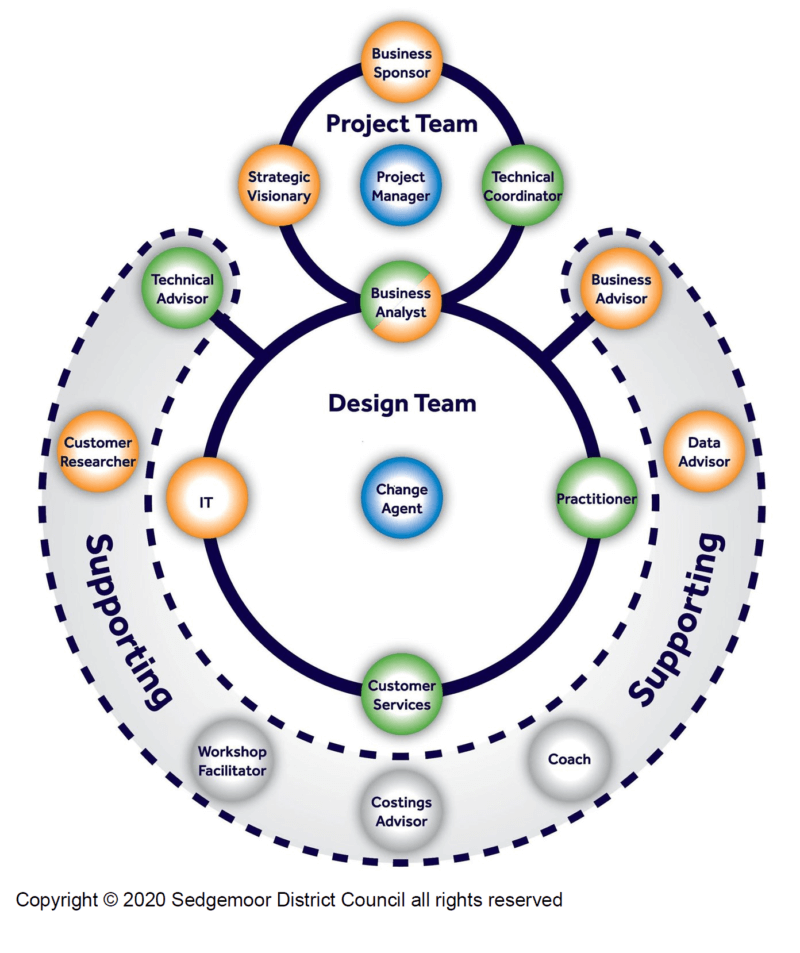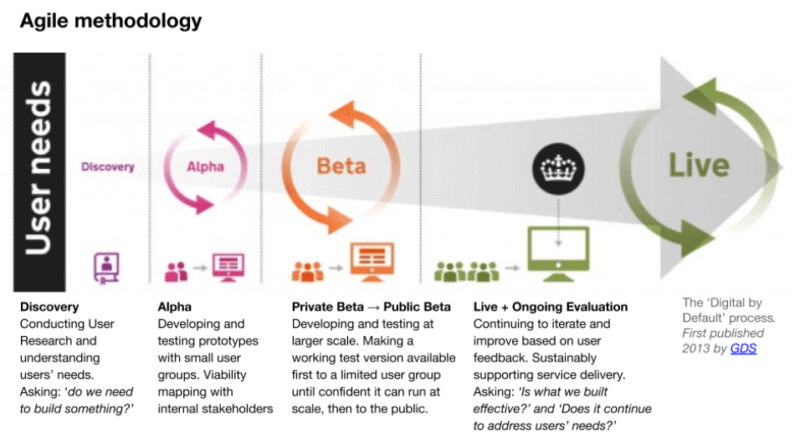Why an Agile Team is necessary for a process improvement project
A vital part of the agile methodology is to form a team or multiple teams working together to complete a project. In DSDM Agile, these teams of motivated individuals are split into two sections; the Project Team and the Design Solution Development Team.
The Solution Development Team
The DSDM approach to project management is geared towards developing IT systems. Therefore, the Solution Development Team consists of a Business Ambassador, Solution Developer, Solution Tester, Business Analyst and Team Leader. This type of development team is aimed at agile software development. Therefore, this approach needs to be modified to enable this model to facilitate process redesign projects.
An altered model created by one of our customers, Sedgemoor District Council, has a Design Team consisting of:

Change Agent – A member of the service area or team who is enthusiastic about change, who shall lead the group through the project, championing the transformation principles of the organisation.
Practitioner – A member of the service area or team undergoing process redesign who has deep knowledge of how the service is run currently but doesn’t necessarily have the push and ideas for change. This enables accurate and in-depth As-Is process maps to be produced, which include the inefficient or wasteful parts of the process that can be identified and improved on in the To-Be mapping.
Customer Services – A member of the Customer Services team is a part of the project to champion the views of the customer and provide insight into how their customer will adopt new ideas.
IT – A member of the IT department is a part of the project to provide digital insight into new technologies that could improve the process by reducing processing time or improving the customer experience.
Business Analyst – The business analyst’s role is to use the tools and processes set out by the Project team and use them to facilitate the service area redesign. This is through process mapping tools such as the Engage Process Modeler and data collection documents, including stakeholders, legal requirements and local policies. The work produced in the Design Team is demonstrated to the Project Team by the Business Analyst.
The Project Level Team
Business Sponsor – The person responsible for delivering a complete set of redesigned processes, meeting the corporate vision
Project Manager – A person who is managing a ‘pipeline’ of activity within redesign teams. This will not be about ‘hands-on’ project management within each team.
Strategic Visionary – A person to ensure that the businesses’ strategy and vision are being met.
Technical Coordinator – A person to ensure that outputs fit with the ‘Solution Architecture Definition’.
What is needed to make this approach work?
A fundamental principle of this approach is that the Design Team is Self-Organising and empowered. Therefore, the service area or team undergoing the process transformation are selecting people within their team to represent them and ensure that the proposed processes are a good fit.
Get the right people in the room. The people actively involved in the design or redesign project need to be the people who actively perform the processes. This ensures that a realistic view of the process is uncovered, which not only includes the common positive path but the infrequent negative paths, which is where waste can be found and removed. Furthermore, active users will have ideas and solutions to improve current processes, which is vital to creating the To-be processes. These insights are key to improving the efficiency of the process whilst also improving customer satisfaction.
Ensuring that the members of the Design Team have allocated time away from their primary responsibilities. As redesign projects can take several weeks to complete, it is key that the members of the team have the time necessary to meet for a daily stand-up and any further time to complete tasks from the product backlog individually or as a group. It is also important to account for staff time long-term, as, through the continuous improvement cycle, their time is required for each improvement cycle.
A common delay for process redesign projects is when the new To-be process maps have been approved, and they are handed over to IT to develop. The common issue is for the estimate for delivery to be estimated unrealistically. This is usually due to the hand off point being the first time that IT has seen the process maps and how the business analysts have designed the implementation. This can be mitigated by including members of the IT team earlier in the redesign process so that when it comes time to build or implement the solution, IT is ready and prepared. Another strategy is to use the Agile / Scrum approach to timeboxing features, using MoSCoW prioritisation to get to a Minimum Viable Product (MVP). The progress of the development can then be reviewed with the Design Team at each sprint retrospective. The prioritised feature list should also be reviewed at regular intervals.
Project lifecycle
The UK government have set out a framework for running Agile projects, which uses several phases, including Discovery, Alpha, Beta, Live. Following the guidance set out in these phases will ensure that the agile principles are followed, leading to an improved customer experience, and a more efficient and effective process for the product owner.
This project lifecycle can be implemented to run in parallel with other projects, leading to continuous delivery of products and processes.

